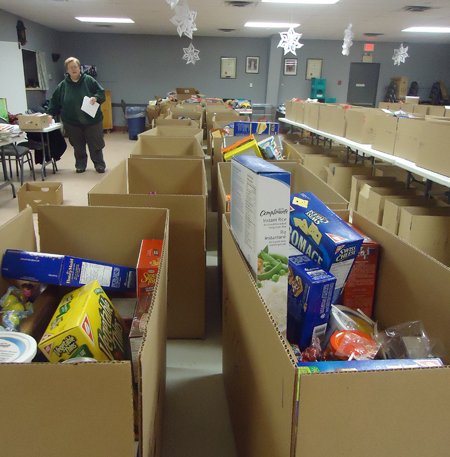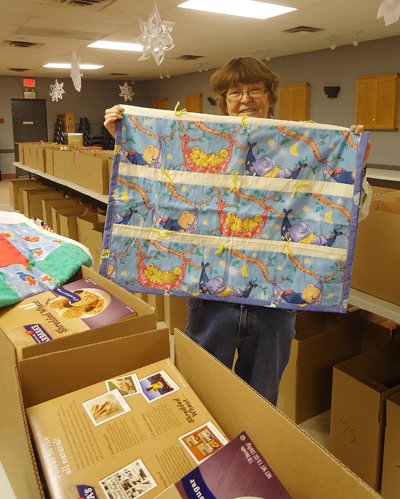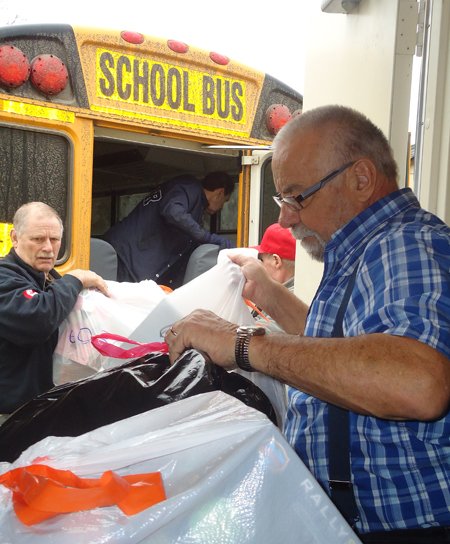What Makes Me Happy?
Lots of things make me happy.
When I’ve had a long tiring day, I sit down on my couch and Dawn comes up to curl up in my arms, Fawnya lays down beside me purring away. There is a moment of contentment that all is good with the world. They are happy, I’m happy.
When I sit down at the bullshit table at the branch and listen to the conversation and often laughter going on. I think about how very close we came to having to close this place and the role I had in keeping it open. That makes me happy.
Visiting with my sister, her children and grandchildren makes me happy even though it is a long 4 hour drive to get there. It has been a few years since I could get down there even at Christmas time. Between low finances and a vehicle that is not the most reliable, it’s often wiser for me to stay home on my own on Christmas.
But, I still manage to be happy at Christmas and here’s why.
My Annual Pleasure
Christmas can be a depressing time for a lot of people. For low income people, it is even more so. Those with children feel that lack of resources. It hurts to not be able to look forward to Christmas in the same way that those with more modest incomes can.
For me, Christmas is three hundred boxes lined up on rows of tables waiting to be filled. It’s called the Christmas Hamper program and for the last several years, I have chaired it for the branch. For anyone who hasn’t read my writing before, the branch, is the local branch of the Royal Canadian Legion.

The Hamper Program
A WW2 Nursing Sister who served in Italy during the war started the program over 40 years ago. It provides a hamper of food including a turkey or ham to low income families and seniors in the community.
We link up with another program called the Giving Tree in a nearby community to provide the children with toys. The Giving Tree program sets up a Christmas tree in a local mall where shoppers come to select children to buy gifts for.
While the branch runs the program, it is community based. All groups and individuals in the community contribute to the program either through donations of food or money. The money is used to buy staples that go in every hamper like potatoes, turkeys, carrots, onions, bread etc
Starts in November
Starting November 2nd and running until December 1st I spend Wednesday & Thursday afternoon taking applications from members of the community. We base eligibility on size of family and income.
Where there are children under 18 I take an wishlist form for each child that gives potential gift shoppers an idea of what the child likes, sizes, age, gender, what they are wishing for for Christmas and of course, we ask about basic clothing items the child may need. Once a week, volunteer, either myself or another, takes the wish lists into the mall, which is about 20 miles away for placement on the Giving Tree.
During my conversational type interview with the applicant I can sometimes learn of other resources they need to access and am able to provide them with direction of who to contact. For example, youngsters needing winter coats can visit a coat exchange at a local church.
Sometimes I learn little details like a parent or senior going through a rough health time. I make notes on those items for later reference. It’s truly amazing the generosity of people at Christmas time. Those details help me to direct some of that generosity to the right people.
Then the Hard Work Starts
By about the first week of December I start to get a pretty good idea of how many hampers are going to be needed and the composition of the families receiving them.
One of the first pieces of information I need is a list of children under two years of age who were not on the list last year. Those will be receiving handmade quilts from a local quilting group. Another quilting group will make available comfort quilts if I’ve identified people going through difficult health issues. Another lady crochets lap robes and donates for them for seniors.

Contact is made to the local schools and churches in an effort to identify and include families who should be receiving a hamper but are too proud to apply. We constantly have to find balance between identifying those in need and their privacy.
Avoiding Duplication
While the vast majority of recipients are really good, there is always a few who will try to game the system. All the programs in the county work together to identify those who attempt to get hampers from multiple sources. Last year, the communication between the groups kept that to 7 families in a county with a population over 25,000.
The Food Starts to Arrive
About the second week of December donations of food start to arrive at the branch. At that point a team of guys swing into action and sort the food as it arrives. Soups, canned veggies, pastas, sauces etc are all sorted into containers in preparation for the assembly that will start a few days before Christmas
A trip is taken to the a county food warehouse to pickup foods they alot us for our program. Local stores are contacted and orders placed for what needs to be purchased. It’s a challenge coordinating some of the items as we don’t have a lot of cold storage so some food needs to be picked up close to time for the hampers going out the door.
Assembly Time Comes
I do most of the admin on the program. Putting together the master list and assigning a number to each family so they are not identifiable during the assembly process. While most families pick up their hamper, some are delivered to seniors residences. The list is ordered by address so the deliveries are grouped together.
A local bus firm provides a school bus when the toys from the Giving Tree are ready for pickup and a group goes in to pick them up. Each was assigned a number when the sheet went to the Giving Tree. When they are brought back they then need to be matched up with the correct hamper so the family picks everything up at once.

Usually around the same time, our banquet room is closed and rows of tables setup. Boxes are assembled and setup on the tables. Each hamper uses upwards of three boxes. The assembly coordinator then numbers the boxes and codes them according to the size of the family. I’ll be around after to mark the boxes to identify those who receive ham or turkey, the number of loaves of bread.
Local volunteers then start to arrive and in just over a day, the boxes will be assembled with all the non-perishable foods. The pickup teams go to fetch the perishable foods as I start to contact families by email and phone to tell them when they can start picking up their hampers.
Deliveries go out first, then the pickups start. A recipient arrives and is directed to me, where I identify them and have them sign for their hamper. A team with a cart is waiting to hear the number of the hamper and if Giving Tree goes with. They load the cart and take it to the back door where more volunteers are looking after vehicles being loaded.
Invariably, we have people who arrive on foot not expecting more than a small bag of food. For that, one or two of the delivery drivers hang around ready to take them and their hamper home.
It’s busy, intense and at times seems chaotic but when we see the response of the recipients, the relief on their faces that Christmas will be a bit easier for them, its all worth it. When the last hamper goes out the door, my thought is usually.. “Okay, that’s Christmas.”

If you like this, please follow me and upvote the post.
If you’d like to see the other days I’ve posted, just visit my profile
If you’d like to be notified when I post next, join my mailing list here.

